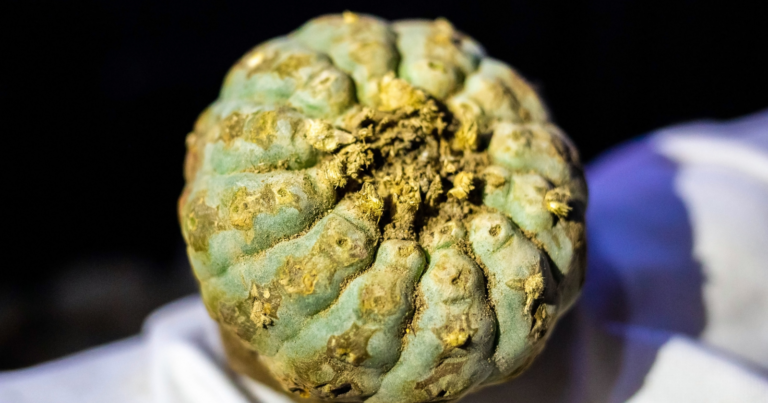Exploring the realm of advanced Buddhist meditation methods can unlock deep healing within you.
These powerful techniques, honed over centuries, allow for profound self-discovery and growth.
With a holistic perspective, they foster harmony between mind, body, and spirit, facilitating a transformative journey in your personal wellness.
In this article, we delve into 8 advanced Buddhist meditation methods that have been proven to catalyze deep healing.
We will guide you on how to adeptly integrate these practices into your daily routine, thereby enhancing your overall well-being.
1) Vipassana: The art of seeing things as they are
Vipassana is one of the oldest Buddhist meditation techniques, known for its focus on developing insight.
This method involves the continuous attentive observation of the mind and body, promoting a clear understanding of how these components interact.
How does one achieve this?
Well, Vipassana encourages you to experience reality in its truest form, free from personal interpretation or bias.
You’re taught to observe without reacting, fostering a sense of calm detachment.
As you do this, you become more aware of the impermanent nature of all things, including your thoughts and emotions.
On a deeper level, practicing Vipassana can root out mental impurities such as greed, hatred, and delusion.
By confronting these negative traits head-on, you can bring about a positive change in your mental state, leading to deep healing.
2) Zen: Seated meditation
Zen meditation, also known as Zazen, is a method that has intrigued me for its simplicity and depth.
Originating from the Zen Buddhist tradition, Zazen is about sitting in quiet contemplation and observing the thoughts that arise without judgment.
The goal isn’t necessarily to empty the mind but to gain insights into the nature of our thoughts and experiences.
Why is this significant, you ask?
Well, by observing our thoughts without getting attached to them, we can foster a sense of detachment and acceptance. This can lead to a profound sense of inner peace and equanimity, essential components of deep healing.
The beauty of Zen meditation lies in its simplicity.
It doesn’t require fancy techniques or elaborate rituals.
All it demands is a quiet space, a comfortable posture, and your willingness to observe your mind.
3) Metta: The practice of loving-kindness
While Zen meditation encourages observation and detachment, Metta meditation, on the other hand, is all about fostering loving-kindness and compassion.
This form of meditation may seem counter-intuitive as it involves actively cultivating positive emotions.
During Metta meditation, you’ll express wishes of happiness, well-being, and peace towards yourself and then gradually extend these wishes to others.
It starts with oneself because as the old saying goes, ‘you cannot pour from an empty cup.’ Practicing Metta helps fill that cup with love and compassion.
For instance, a person struggling with self-esteem issues might find Metta meditation beneficial.
By regularly sending positive wishes to oneself, they can cultivate greater self-love and acceptance.
Over time, this can lead to a profound shift in self-perception and overall emotional health.
4) Chakra: Healing your energy centers
Chakra meditation, a unique yet potent form of meditation, is focused on balancing and healing our energy centers or “chakras.”
These chakras, according to ancient Buddhist beliefs, are the nexus of spiritual power in the human body.
Each of these seven chakras corresponds to different aspects of our physical and emotional well-being.
When our chakras are balanced and in harmony, we experience a sense of deep healing and inner peace.
So, how does Chakra meditation work?
In Chakra meditation, you focus your attention on each chakra, visualizing its color and chanting its specific sound or mantra.
This practice serves to open, activate, and balance each chakra.
By practicing Chakra meditation regularly, you can tap into these energy centers and promote deep healing at a physical, emotional, and spiritual level.
This practice can help you attain a state of equilibrium that resonates with your innermost aspirations for holistic well-being.
5) Tonglen: Exchange of suffering and compassion
Tonglen meditation is another advanced Buddhist meditation technique that facilitates deep healing.
This method involves a conscious exchange of suffering and compassion, a practice that is profoundly transformative.
Here’s how it works:
In Tonglen meditation, you visualize inhaling the suffering of others and exhaling compassion and healing towards them. This altruistic practice cultivates empathy and compassion, promoting deep inner healing in the process.
Key elements of Tonglen meditation include:
- Visualization of the exchange process
- Deep focus on empathetic feelings
- Imagining relief and healing
Incorporating Tonglen meditation into your routine can help you develop a sense of selfless love and compassion, fostering deep healing not just for yourself, but for others as well.
This shift in perspective can lead to transformative change, contributing to an overall sense of well-being and inner peace.
6) Anapanasati: Mindfulness of breathing
In our pursuit of advanced Buddhist meditation methods for deep healing, we can’t overlook the transformative power of Anapanasati meditation.
This practice, also known as mindfulness of breathing, is a core teaching of the Buddha.
It involves focusing on your breath to cultivate mindfulness and tranquility.
I find Anapanasati meditation particularly intriguing because it’s both simple and profound. By merely focusing on your breath, you become more aware of the present moment and less entangled in past regrets or future worries.
How can this facilitate deep healing?
When we’re fully present, we’re better equipped to process our emotions and experiences objectively.
This groundedness in the present can alleviate stress, anxiety, and other negative emotions that impede our path to healing.
In essence, Anapanasati meditation is a tool that can help us foster mindfulness, promoting deep healing and overall well-being.
7) Samatha: Cultivating tranquility and concentration
Imagine a turbulent sea, waves crashing and churning with no end in sight.
Now, envision these tumultuous waves gradually calming down, giving way to a serene and tranquil sea.
This transformation mirrors the effect of Samatha meditation on our mind.
Also known as calming meditation, Samatha is a Buddhist practice aimed at calming and stabilizing the mind. It’s a method that I personally find deeply healing and soothing.
In Samatha meditation, you focus on a single point of concentration, such as your breath or a visual object. This single-pointed concentration helps quiet the mind and reduce mental chatter.
Why is this practice crucial for deep healing?
A calm and stable mind is more receptive to healing and transformation. It allows us to better process our emotions and experiences, leading to deeper insight and understanding.
This clarity can foster deep healing, bringing about a profound change in our mental and emotional well-being.
8) Vajrayana: Tantric Buddhism
Last but not least, let’s delve into the profound realm of Vajrayana meditation.
This advanced Buddhist meditation method is often considered the pinnacle of the spiritual journey in Buddhism.
Vajrayana, also known as Tantric Buddhism, incorporates a wide range of practices designed to accelerate one’s path to enlightenment.
These practices include mantra recitation, visualizations, and complex rituals.
But how does Vajrayana facilitate deep healing?
The practices within Vajrayana aim to tap into our innate Buddha nature – the pure, enlightened mind that lies within each one of us.
This transformative power makes Vajrayana an invaluable tool for deep healing.
Combining methods for a comprehensive practice
Now that we’ve explored the 8 foundational Buddhist meditation techniques individually, I want to focus on 3 of them and discuss how you can integrate them into a unified practice.
Vipassana, Samatha, and Metta are not mutually exclusive but complement each other beautifully:
- Start your meditation session with Samatha to calm your mind and enhance focus.
- Transition into Vipassana to explore the nature of your thoughts and feelings.
- Conclude your session with Metta, sending out positive vibes to yourself and others.
Remember, the goal isn’t to achieve perfection in each method but to use them as tools to foster self-understanding, compassion, and ultimately, deep healing.
Making meditation a daily habit
I understand that diving into advanced Buddhist meditation methods can feel overwhelming, especially if you’re new to the practice.
But let’s take a moment to remember why we’re doing this: for deep healing, self-discovery, and growth.
It’s not about mastering every technique or reaching some elusive state of perfection. It’s about creating a space for yourself each day, where you can explore your mind and heart with curiosity and kindness.
We often hear about the profound benefits of meditation, but these benefits are the fruits of consistent practice.
So, I encourage you to make meditation a daily habit.
It doesn’t have to be for hours on end; even just 10-15 minutes per day can make a significant difference.
Most importantly, aim to incorporate the techniques we’ve discussed into your routine in a way that feels right for you.













